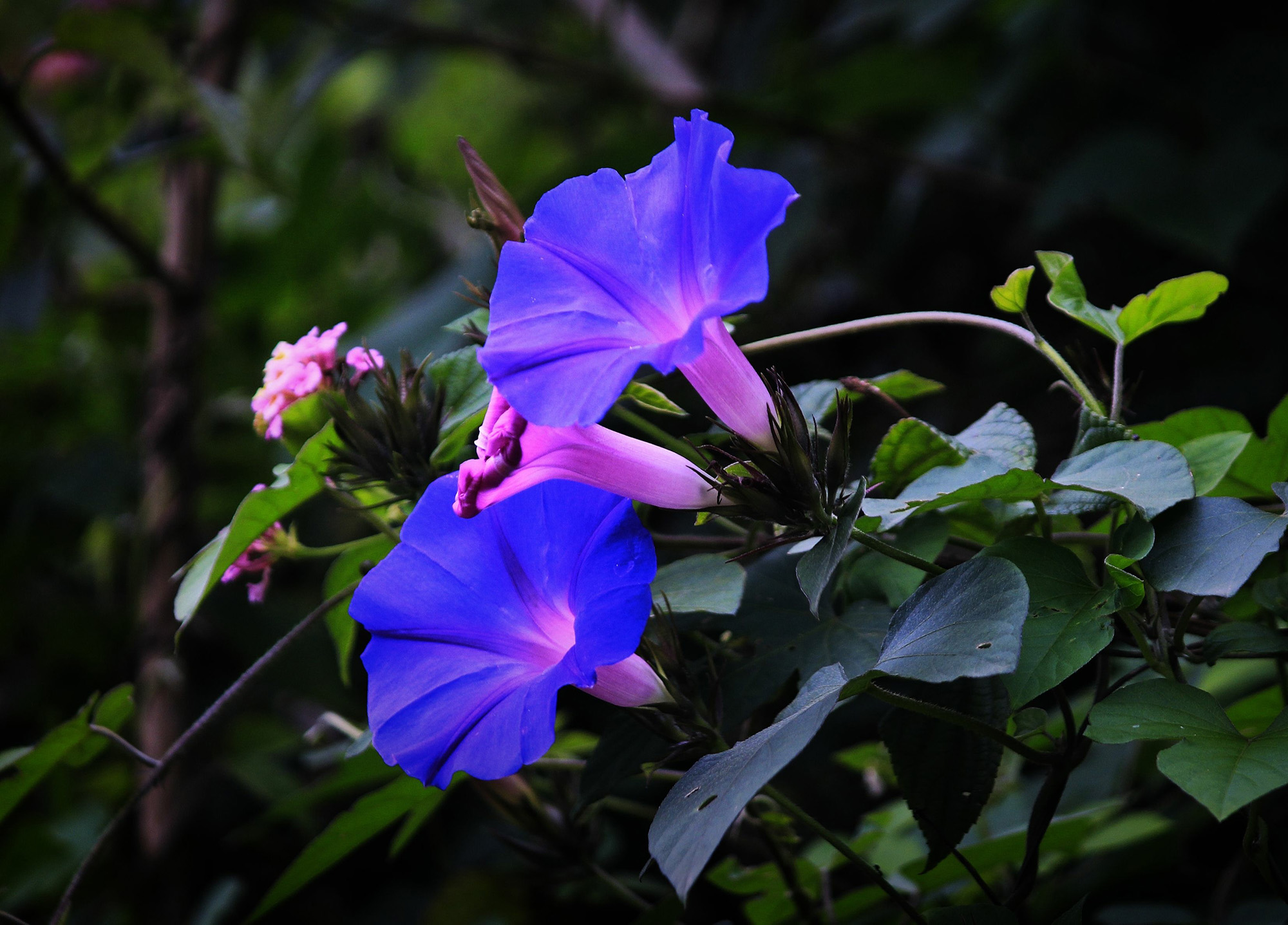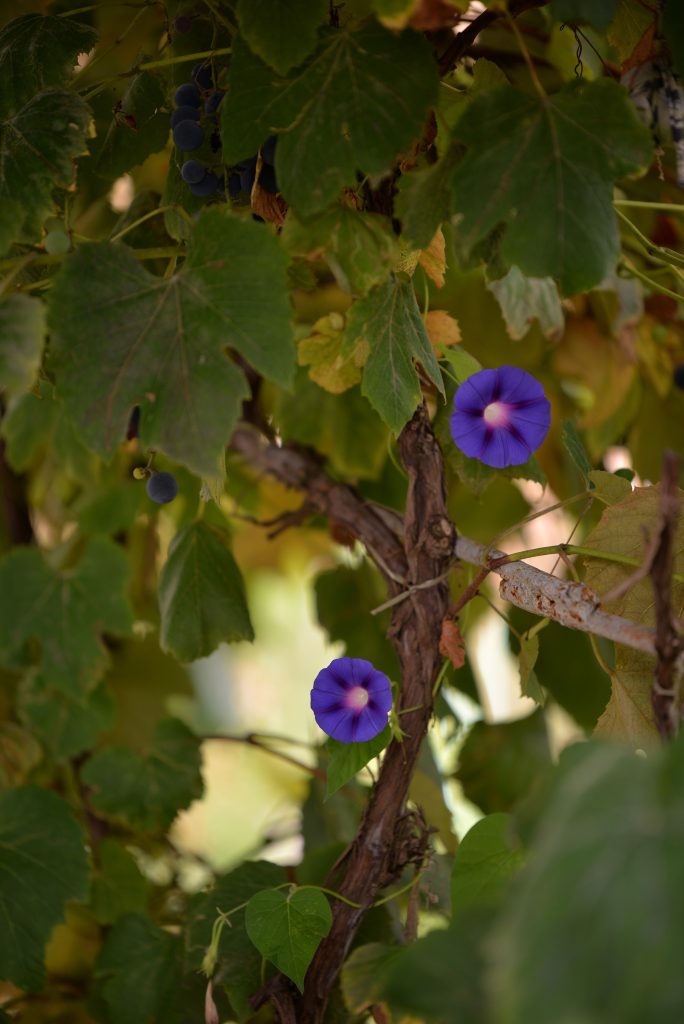- © 2025 Annapolis Home Magazine
- All Rights Reserved
By Kymberly Taylor

The gorgeous morning glory Ipomoea purpurea grows in full sun and prefers poor, unfertilized soil. You would never know that this fragile beauty springs from such humble ground. Velvet deep-throated blossoms are programmed by the universe to unfurl at first light in time to feed morning pollinators and die by sunset. There is no time to mourn! Masses of identical new blooms blanket the plant the following day.
Their diurnal cycle is strategic. We have Carl Linnaeus to thank for this knowledge. Linnaeus invented the spectacular Floral Clock in 1748. He hypothesized that certain plants open and close their flowers at precise times of the day. Their bloom time was so predictable that he believed that if you created a garden in the shape of a clock and planted each hour with specific flowers, you could tell time at a glance.
His floral clock had mixed results, but Linnaeus was correct about timing. Scientists today know that flowers evolved with different bloom times to reduce competition for pollinators. Researchers note that pollinators are directed by a kind of internal clock synched to those of their primary food sources, sometimes even to the hour. For example, the rare Morning Glory Bees, Cemolobus ipomoea, feed primarily on the pollen of the “Bush Morning Glory” and another called “Man of the Earth.” These bloom very early, the only time Morning Glory Bees fly, according to Colorado University entomologists Camille Zwaan & Collin Schwantes.
It seems that divine timing is at work 24 hours a day. The striking Moonflower Ipomoea alba is a member of the morning glory family but only blooms at night and closes at dawn. Its powerful fragrance attracts the night-flying sphinx moth.
The morning glory is not only mysterious; it also has hidden strengths. The pre-Columbian peoples of Mexico used it to create rubber, predating Charles Goodyear’s discovery by 3,000 years. Ancient Aztec priests ingested its seeds to induce spiritual visions. Seeds from Ipomoea genera contain psychoactive ergine (LSA) and ergometrine and act much like LSD. Its additional uses are a bit less exciting. The morning glory was used by the Chinese in the 8th century as a powerful laxative.
When it comes to the garden, some confuse the morning glory’s abundance with another word that starts with A: affliction. Yes, some call it a weed! However, we now understand its tenacity is really a gift—a reliable fresh food source for pollinators. Why not take advantage of its boisterous tendrils by sculpting shady arbors and topiaries? I once created a sunflower hut for my daughters Isabella and Hawthorne, planting giant sunflowers with morning glories that flowed around them like twine, creating sturdy flowering walls.
The fact that many call this plant a weed makes the morning glory even more special to me—each blossom opens once, an exquisite ode to morning.
 Good Morning
Good MorningBy Catherine Pierce
Good morning, day full of fine rain
gently ruining my red suede shoes.
Good morning, day in which I am not in a hospital
or on the phone with a hospital
or on the phone with an assisted living facility
or on the phone with an insurance company or
funeral home or lawyer’s office.
Good morning.
Good morning, day in which I felt guilty dropping off my oldest
child at school in sneakers that are a little too big.
Good morning, companion guilt, guilt that walks next to me
and doesn’t ask much.
Good morning.
Good morning, day hazed by a semi-sleepless night, day begun
when my youngest child woke at 5:30, and I held him in the dawn-
dark until he said, “Out there? Out there?” like a cheerful parrot.
Good morning.
Good morning, obscure Elvis song on the radio reminding me
of that time I went to Graceland for laughs and ended up weeping,
I was 23 and foolish. Forgive me.
Good morning, day in which I can ask forgiveness again.
Good morning, papercut.
Good morning, small wound that will be gone by Saturday.
Good morning, chance again to read the book I’ve half-finished.
Good morning, chance again to feel that creeping dissatisfaction
at how I haven’t yet finished the book.
But maybe tonight I will. Good morning, maybe tonight.
Good morning, sink full of dishes, spider web in the corner.
Good morning, house to which I’ll in all likelihood
return later today, looking largely the same as when I left.
Good morning, likelihood.
Good morning.
Good morning.
Good morning.
From Danger Days by Catherine Pierce Published with permission from Saturnalia Press. To order Danger Days and read more work from Catherine Pierce, go to saturnaliabooks.com.
Catherine Pierce is the author of four books of poems, most recently Danger Days (2020) by Saturnalia Books. Her work has appeared in The Best American Poetry, the New York Times, American Poetry Review, The Nation, and elsewhere. An NEA Fellow and two-time Pushcart Prize winner, she is Professor of English at Mississippi State University, where she co-directs the creative writing program.
© Annapolis Home Magazine
Vol. 13, No. 5 2022